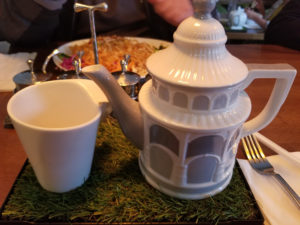The Hunger Games Extra Credit Review
Suzanne Collins, author of The Hunger Games (2008) novel, describes in detail the survival skills young boys and girls must have in order to become a “victor” in the hunger games. The movie The Hunger Games (2012) also details how boys and girls between the ages of 12 and 18 must survive the killings in order to successfully become the “victor” in the hunger games. In The Hunger Games (both the novel and the movie) the reader/viewer can understand the need to fight till death for food. The Hunger Games demonstrates the barbaric culture among the districts as they kill each other for food. One can immediately see the inequality that exists between the rich and the poor. In Panem, the rich live in the Capitol and the poor live in the districts. Among the disparity between rich and poor, food is the most evident. This is how one can distinguish the difference that exists among the rich and poor. The rich do not have to compete for food as the poor do. Many of the families in the districts do not have enough food to eat. Food becomes the primary need for the families in Panem.
Katniss Everdeen lives with her mother and her 12-year-old sister. Her father died in a mine explosion. Katniss then becomes the family’s sole provider. Afraid of being caught, she must secretly hunt for food because she knows that it is illegal to do so in the woods (Collins, 2008, p. 3). Hunting becomes part of District 12’s culture. Katniss and Gale, both from District 12, hunt for food for their families. The hunger games are televised games in which one boy and one girl from each of the 12 districts will compete till death against each other for food. Their names are drawn randomly once a year during what is called the reaping. Food is the most important element in Panem. In chapter one, page six, Katniss states that families in District 12 starve to death, therefore they must obtain food one way or another.
One example from chapter one, page four, from The Hunger Games, the reader can understand how love and food are an important part of their culture. The love that Katniss has for her little sister Prim, demonstrates how this affection is part of their culture. She takes her little sister’s place in the reaping to protect her. At the beginning of the film as well as the novel, Katniss’ little sister, Prim, leaves her a small piece of goat’s cheese on the day of the reaping. For Katniss, this is a dear present from Prim. So dear that she rather save it than eat it right away. As she meets Gale in the woods, he shares a loaf of bread with her and she in return shares the small piece of goat’s cheese Prim gave her. Contrary to the novel, in the movie the audience does not see the piece of cheese on the table, but Gale does share a piece of bread with Katniss. As a reader/viewer, we can appreciate how even sharing a small piece of food is also an important part of their culture. Comparing the novel and the film, there are certain instances where the book is more descriptive than the film. Never the less, one can understand the appreciation the characters have for food.
In chapter two, page 31, from The Hunger Games, Peeta gives Katniss two loaves of burnt bread so she can take home and feed her mother and sister. That became an important moment for Katniss, knowing that Peeta probably took a beating from his mother because of the burned bread. For Katniss, that was a sign of Peeta’s compassionate side, even if he took a beating for it. She thought that he must have burned the bread on purpose because he knew that burned bread was not going to sell. This scene in the film is seen as it is described in the book. Once again, the importance of food plays a big role in the story. Katniss can never forget Peeta’s compassion and somehow her gratitude towards him is what saves him during the hunger games.
Chapter three, page 40, from The Hunger Games, describes how Katniss begs Gale to take care of her family and not let them starve. Although Katniss and her family suffer from hunger, she is well mannered when supper is served on the train ride to the Capitol. Katniss has never eaten so much good food to the point that her stomach resents it because she is not used to eating in abundance. Although there is considerable amount of food before her, she can’t help to think that back at District 12 her family has nothing to eat. Contrary to the chapter in the book, the abundance of food on the table is not visible to the audience on the train ride scene in the film.
The film and the novel each have a specific technique to discuss food and culture in a detailed manner which lets the reader/viewer understand how precious food can be. After reading the book and viewing the film, one can understand that the hunger games is mostly a determination to obtain food for the families of the competitors using methods and skills that will grant them victory in the end. The hunger games are exactly what the title describes, a game where hunger is the driving force to win the competition.
References
Jacobson, N. (Producer), Kilik, J. (Producer), & Ross, G. (Director). (2012). The Hunger Games (Motion Picture). United States: Lionsgate & Color Force.
Collins, S. (2008). The Hunger Games. New York, NY: Scholastic Inc.





